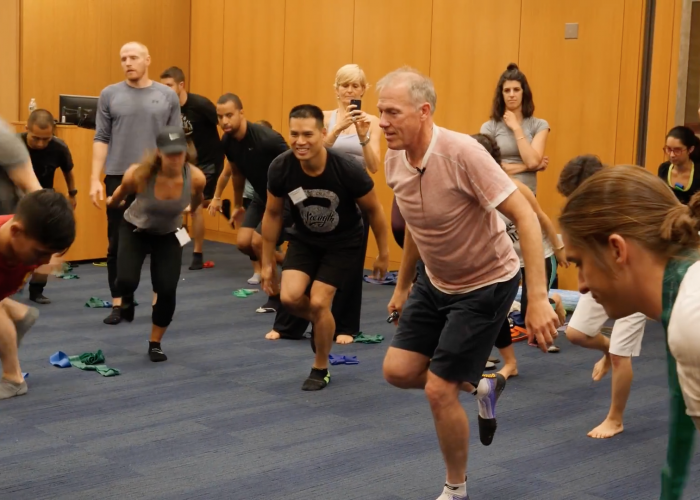
Learn to connect the dots from the client’s story to an actionable program.
2 Day Program
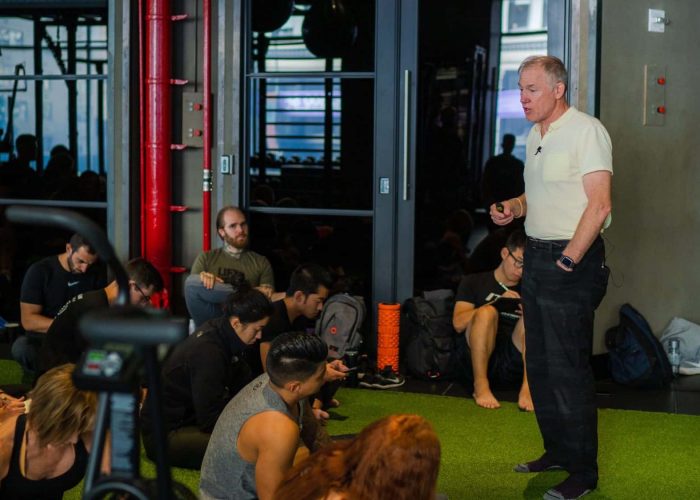
A special experiential workshop with Dr. Craig Liebenson DC.
1 Day Program
The status quo in the training or health care focuses on what’s either always been done or is trendy. However common problems like weight loss & pain relief are hard to solve & many great minds have tried. If we think of problems the same way & just come up with new techniques we’ll never raise the bar. But, if we re-frame the problem itself or try to solve for a different problem we can achieve the desired results as a side effect.
For example, instead of offering a “quick fix” (impossible) for pain we can teach Acceptance & Commitment Therapy (ACT) (achievable). Today Ozembic is all the rage for weight loss along with the latest diet trends. However, we can focus on building muscle mass instead of weight loss.
Today’s health care field has fallen into the negative health trap of over-diagnosis and over-treatment. This drives a transactional relationship instead of an infinite game mindset. Our aim is bring together a community of trainers, coaches & clinicians to promote & support positive health.
Here’s what we’ll cover:
We’ll discuss how to surf the force-velocity curve to make training more individualized. Out goal is to lower biological age so life span doesn’t outrun health span. Our positive health orientation finds a silver lining in the pain encounter so as to motivate sustainable lifestyle/behavior change.
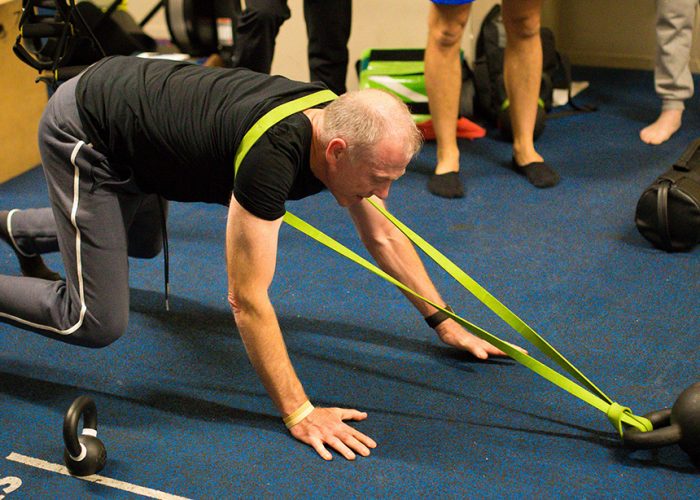
Two 4-hour programs combining lectures, Q&A, and guided workouts. With 7 special guests.
In this Knowledge Translation program you will learn how to implement high-value evidence-based MS prehab/rehab in you’re clinic/gym setting. Join us as we take you through the gap process for building a person-centered program. Learn how to perform the Needs Analysis to build a precision profile & then program for your clients/patients.
• Implementation of evidence for High value prehab/rehab
• HOW to bridge the gap (BTG) from knowledge to practice (gym floor, clinic, etc).
• WHAT a Gap Analysis is
• Example of my Needs Analysis Questions from my charts
• How to use both the Movement Prep & GPP (general physical prep) (taught in FPM Prepare & Train) for for establishing baseline current capacity
• HOW to BTG from current to required capacity

Learn to connect the dots from the client’s story to an actionable program.
2 Day Program
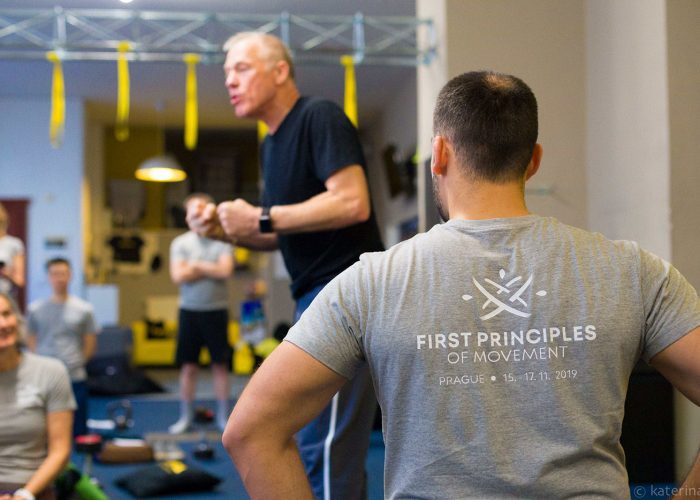
Give tangible hope and an achievable plan through a positive experience with movement.
2 Day Program
How the inactivity crisis is leading to a disability epidemic and an increasing gap between biological age & chronological age
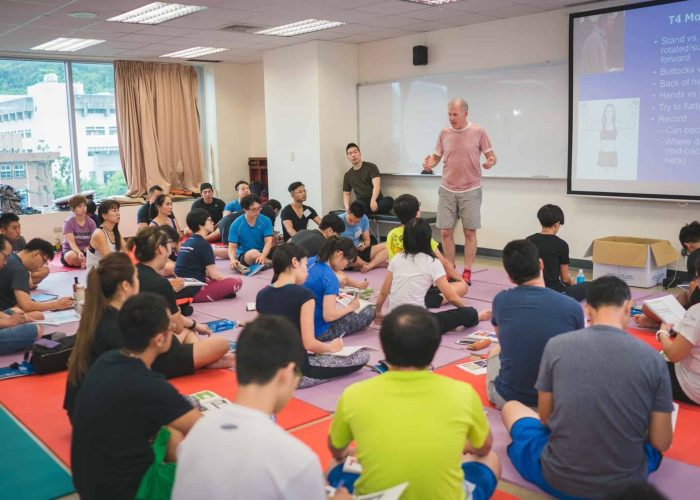
25+ hours of cutting edge content on our “guide by the side” philosophy, gamification, ecological validity, etc w/ many world experts.
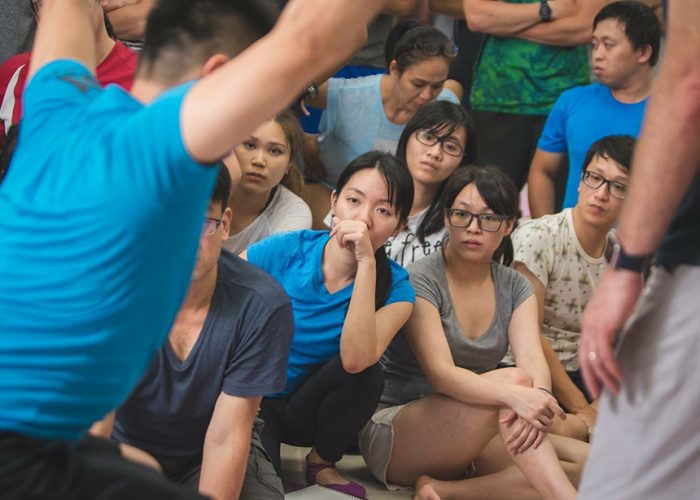
A 5 month program focused on teaching you how to build a Precision Profile Template.
Format:
Pre-requisites
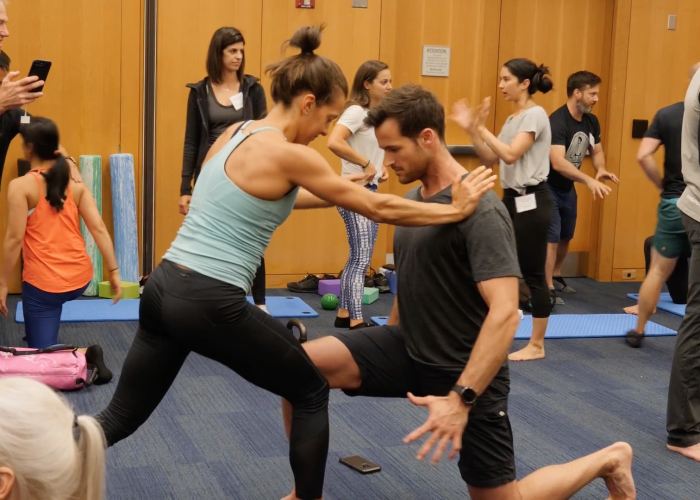
Building capacity and the trainable menu.
2 Day Program
Learn how to:
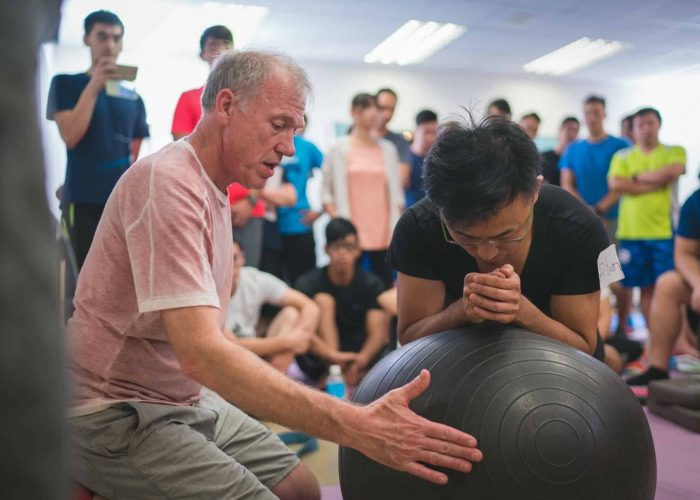
This course completes the series – PREPARE, TRAIN, & RECOVER, thus ensuring your ability to build programs designed to sustainably progress a person’s physical development.
Recovery is equally important in the rehab setting as in the gym. In both the clinical & training environments recovery is a pre-requisite for enhancing a person’s resilience.
Without recovery adaptation from training stimulus can not occur. Thus “recovery is the limiting factor”. In this Lab Immersion Experience we will guide you to bridging the gap from sport science and evidenced-based approaches to your practice, team or gym environment.
This course completes the series – Prepare, Train, & Recover, thus ensuring your ability to build programs designed to sustainably progress a person’s physical development.
Principles from high performance settings have stress-tested many of the innovations that inform
This Lab Immersion Experience focuses on MOBILITY from the ground up by taking a Joint by Joint approach (including many techniques of Dr Karel Lewit & Pr Vladimir Janda from Prague).
Each area is taught in sequence following basic principles & a systematic process which helps you assimilate the techniques with GPP, & region specific rehab (ie tendonopathies).
Manual Therapy & Self Mobilizations are integrated with other recovery methods such as breathing re-education, sleep, cryo, mindfullness, hydration, diet, threat management, load management, & work (aerobic) capacity (ie repeat effort endurance).
Special “key” areas requiring mobility are taught with extensive practical application
Chart your path through the FPM ecosystem – from our FREE resources, to webinars and in-person courses, to the FPM Mentorship and beyond.